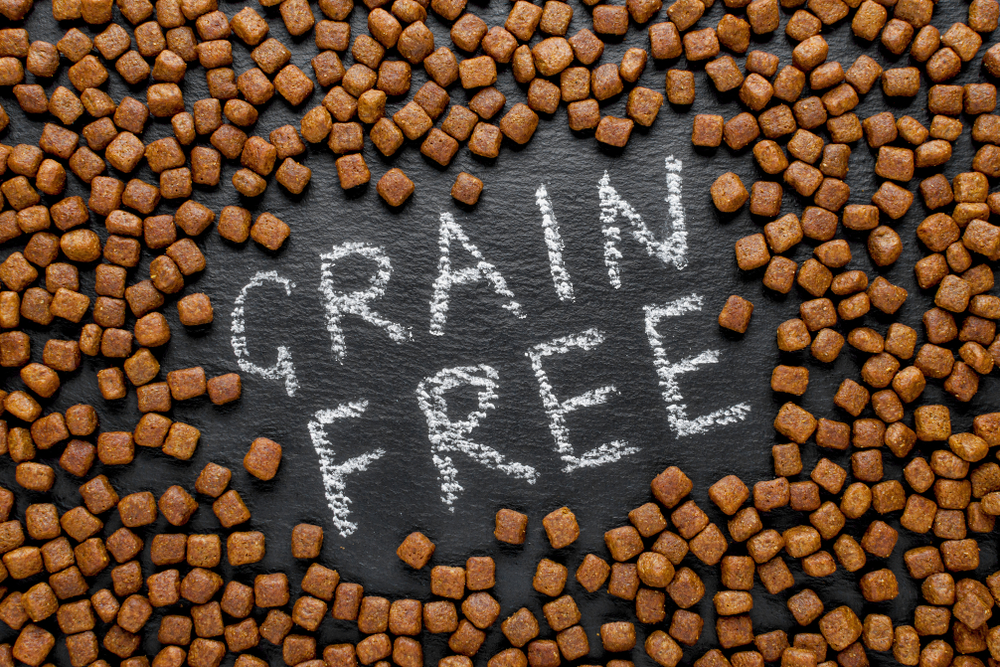Numerous pet foods are on the market that make choosing the right one for your four-legged friend confusing—more so, because the right food choice depends on your pet’s specific nutritional needs, which can be difficult for pet owners to determine. Therefore, our Memorial Animal Hospital team provides tips that will help you choose the best food for your furry pal.
#1: Understand your pet’s basic nutritional needs
Cats and dogs have different nutritional needs, and knowing their basic requirements is important when choosing a food.
- Dogs — Dogs are omnivores, and they eat meats, vegetables, fruit, and grains. Your dog’s food should contain at least 18% protein.
- Cats — Cats are carnivores, and their food should be 40% to 45% protein and high in fats, with few carbohydrates. While cats can eat grains, they lack the digestive enzymes necessary for their digestion, which means the grains provide no nutritional benefit. Feline diets must also contain taurine, an amino acid that cats cannot produce, but which they need to prevent heart problems and blindness.
#2: Consider your pet’s specific characteristics
No pet food is perfect for every pet, and you must consider the following factors when choosing your pet’s food. Considerations include:
- Life stage — Pet life stages include puppies and kittens, adults, pregnant and nursing females, and senior pets. Meeting your pet’s life-stage nutritional requirements is important to ensure they stay healthy.
- Size — Dogs typically need diets formulated for their size. For example, giant-breed puppies need a diet that isn’t too calorically dense to prevent an accelerated growth rate, which can place stress on developing bones and joints, and lead to developmental orthopedic issues.
- Activity level — Working dogs and high-energy pets burn more calories than those who spend the majority of their day on the couch. Consider your pet’s activity level when choosing a food to ensure their caloric requirements are met.
- Body condition — The majority of U.S. pets are overweight or obese, and pets whose body condition score (BCS) is higher than five on a scale of one to nine should be on a weight maintenance diet.
- Health condition — Prescription diets can benefit pets affected by certain health conditions, such as food allergies, kidney disease, diabetes, bladder stones, and arthritis.
#3: Check your pet’s food for appropriate certification
The Association of American Feed Control Officials (AAFCO) is a non-profit organization that establishes commercial pet food standards in the U.S. An AAFCO label means the pet food meets the minimum standards for complete and balanced nutrition. The label can usually be found under the ingredient list and includes one of the following statements:
- This product is formulated to meet the nutritional levels established by the AAFCO Dog or Cat Food Nutrient Profiles.
- Animal feeding tests using AAFCO procedures substantiate that this product provides complete and balanced nutrition.
#4: Read your pet’s food ingredient list
A pet food that meets AAFCO standards is not necessarily a high-quality food, so you should read the ingredient list to determine if the food meets expectations. Ingredients are listed from highest weight to lowest, and the first two to three ingredients should be high-quality meat-based elements. Common pet food ingredients include:
- Meat — Meats, such as chicken, turkey, beef, and fish, are the animal muscle and provide quality protein.
- Meat or poultry by-products — Meat or poultry byproducts are usually made up of organs and other animal parts, and are also a protein source. They do not include hair, horns, or hooves, and are highly digestible and not unhealthy for your pet.
- Meal — Meal is the ground version of meat, poultry, and their byproducts.
- Animal fats or plant oils — These ingredients add flavor and provide fatty acids to the food.
- Plant ingredients — Ingredients, such as rice, corn, soy, barley potatoes, and peas, add nutrients and calories to dog food. These starches can also keep dry kibble compacted.
- Dietary fiber — Ingredients, such as inulin, powdered cellulose, dried beet pulp, and fructooligosaccharide, provide dietary fiber.
- Preservatives — Synthetic preservatives, such as butylated hydroxyanisole, butylated hydroxytoluene, and ethoxyquin, and natural preservatives, such as tocopherol, ascorbic acid, and rosemary extract, help keep pet food fresh and stable during storage.
#5: Consider wet versus dry pet food
High-quality wet and dry pet food options are available, and each has benefits.
- Wet food — Wet food contains more water and provides better hydration. Wet food also improves digestibility and is typically more satiating and palatable. Since cats have a low thirst drive, wet food is typically recommended.
- Dry food — Dry food is more convenient, because kibble doesn’t go bad if left out, and can help with plaque and tartar removal from your pet’s teeth and promote oral health.
#6: Be aware about grain-free dog food

In 2018, the Food and Drug Administration warned that some dogs on a grain-free diet developed dilated cardiomyopathy. More research is needed to understand if a link exists between these diets and heart disease, but you should be aware of and consider the warning when choosing a food for your dog.
#7: Seek veterinary advice
You must consider all these factors when choosing an appropriate food for your pet. To ensure your furry pal’s nutritional requirements are met, ask our team for nutritional counseling, so you can rest assured your pet’s diet is the best for them.
Contact our Memorial Animal Hospital team for advice about all your pet’s nutritional needs.






Leave A Comment